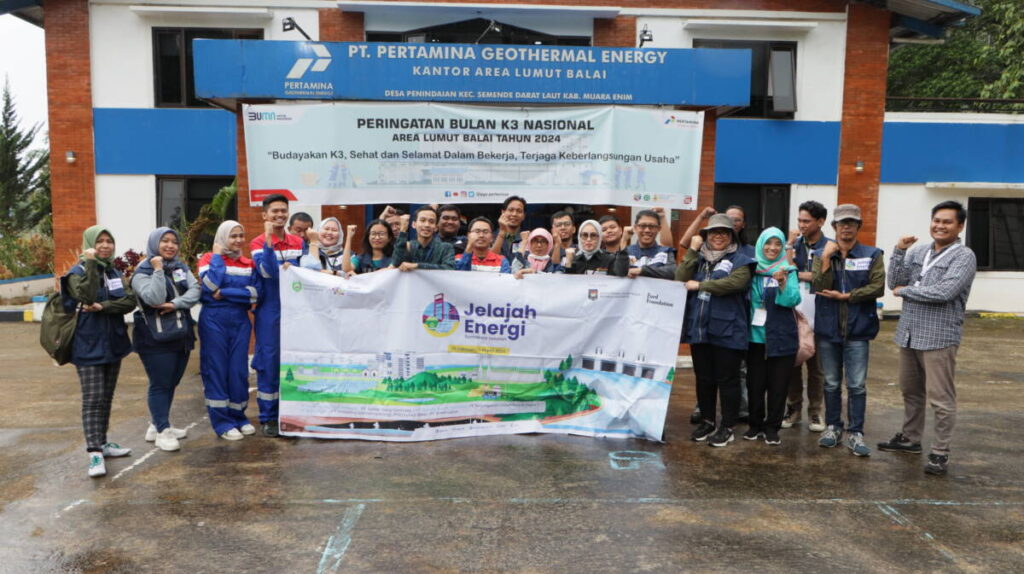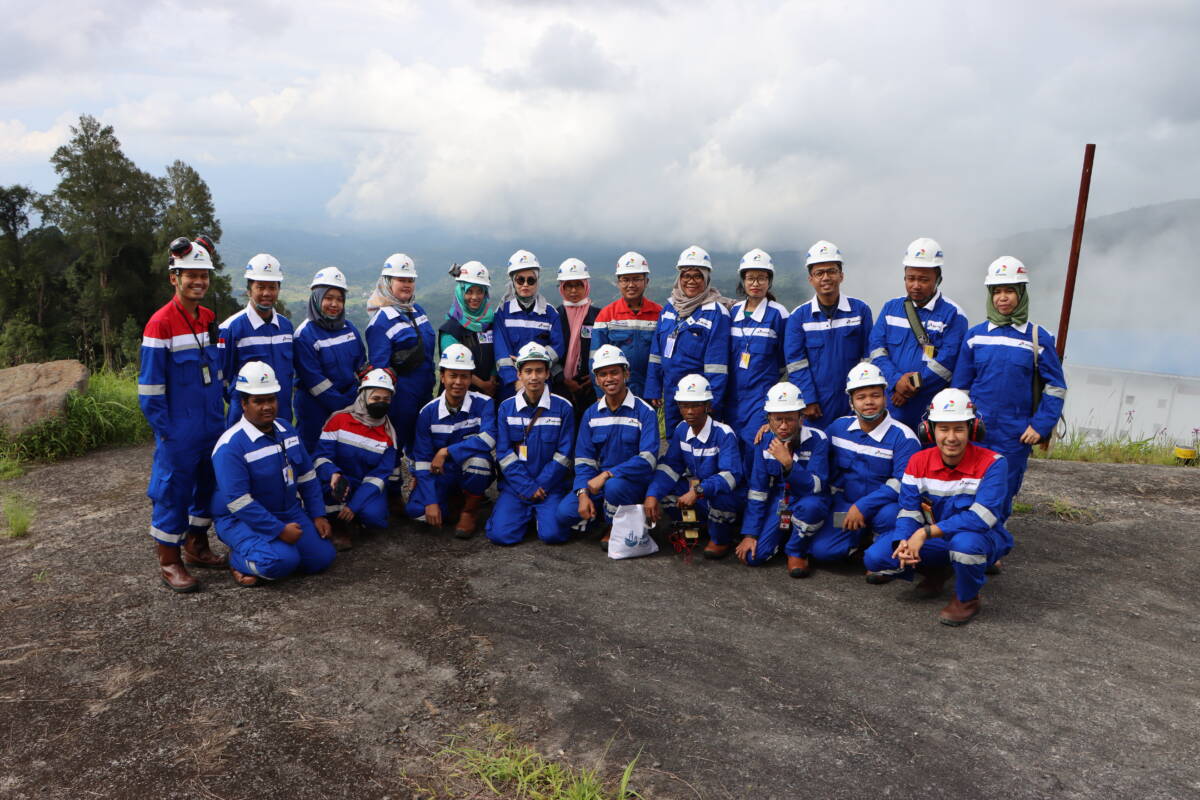Palembang, February 29, 2024 – On Thursday morning, the Jelajah Energi South Sumatra group arrived at the Geothermal Power Plant (PLTP) in Lumut Balai, Muara Enim, South Sumatra, owned by PT Pertamina Geothermal Energy Tbk (PGE), after a long and winding journey that took about 4 hours from Muara Enim City. The group was welcomed with cold weather due to the plant’s location on a hill. Despite challenging geographical conditions, PLTP Lumut Balai Unit I, located at least 2,055 meters above sea level, has become a silent witness to the wonders of geothermal energy.
Acting General Manager of PT Pertamina Geothermal Energy Tbk (PGE) Lumut Balai Area, Aris Kurniawan, explained that the company is committed to providing reliable, affordable, clean energy access to all Indonesian people. The Lumut Balai Unit 1 PLTP, which has an installed capacity of 55 MW, has been supplying electricity to around 55,000 homes in the PGE working area since 2019. Moreover, it has helped reduce greenhouse gas emissions by 300,000 tons of carbon dioxide (CO2).
“The Lumut Balai geothermal plant continues to move forward. By 2024, the target is to complete the construction of unit 2 of the Lumut Balai PLTP and proceed to the commissioning stage. Unit 2 has entered the EPCC (engineering, procurement, construction, commissioning) stage for the plant’s construction. In December 2024, it is expected to enter the commissioning phase until commercial operation (commercial on date). The project is still on track,” said Aris.
Aris stated that the Lumut Balai geothermal power plant is located in the Lumut Balai and Margabayur geothermal working areas (WKP), South Sumatra, with a mapped potential of 270 MW. With the development of the LMB Unit-2 Project, the installed capacity for the Lumut Balai Area will increase to 110 MW, equivalent to lighting 110,000 homes.
“Through our projects in Lumut Balai, we aim to mitigate climate change risks and support Indonesia in achieving 23% of the national grid mix from renewable energy sources by 2025. With a focus on innovation and efficiency, PGE is committed to reducing carbon emissions even further in the future to support Indonesia Net Zero Emission 2060,” said Aris.
Aris highlighted that, alongside the success of the energy transition through the optimization of geothermal development as a green energy source, PGE is also prepared to contribute to the carbon exchange initiative. This initiative serves as a tool that can encourage effective emission reductions and incentivize companies to participate in efforts to mitigate climate change.
“As of September 2023, PGE has contributed to the domestic carbon market by issuing 864,209 tons of CO2 equivalent (CO2eq), and this is the first geothermal carbon project on the carbon exchange,” Aris said.

Faricha Hidayati, Coordinator of the Industrial Decarbonization Project, Institute for Essential Services Reform (IESR) stated that among the geothermal working areas (WKP) established by the government, WKP Lumut Balai is one of the leading ones because it has geothermal potential of more than 300 MW, of which 55 MW has been operating since 2019 and other units are under construction and will be completed in December 2024. If this geothermal potential is properly utilized, Indonesia will be able to have 23.7 GW of clean energy and achieve net zero emissions by 2060, or sooner.
“Unfortunately, not many people are aware of this abundant potential, and many still choose energy from fossil fuels. Therefore, IESR in collaboration with the Energy and Mineral Resources Agency of South Sumatra held this Energy Tour to disseminate this information to the public. Hopefully, the Indonesian people will become wiser in using electricity and the like, and can then jointly oversee government policies in encouraging Indonesia’s energy transition to become greener and more sustainable,” Faricha explained.

